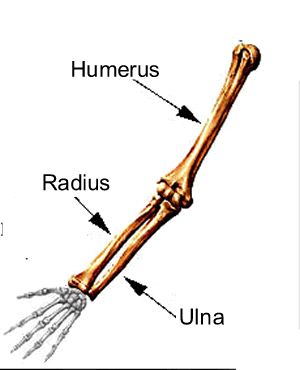Sports Science
Dissection of a
chicken wing
During this activity we will investigate the muscle, tendons and ligaments of a chicken wing.
Apparatus needed are:
- dissecting board;
- dissecting kit;
- fresh chicken wing.
Remove the skin from the chicken wing.
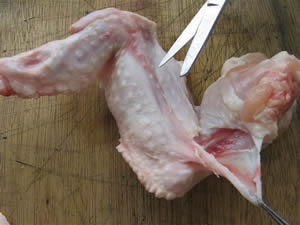
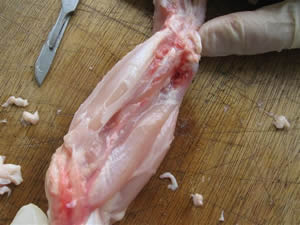
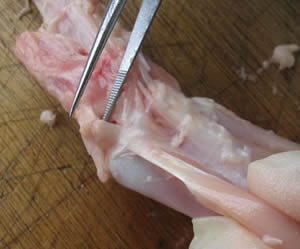
Notice where each muscle is connected to the bone.

Squeeze a muscle and notice how the bones move. View the video on the right. Muscle exist in pairs called flexors, which flex the wing, and extensors, which extend the wing. Pull on each muscle and identify them as flexors or extensors.
Draw the muscle groups of the wing.
Look at the elbow joint. Identify at least one ligament. Ligaments connect bones together.
At the surface of each bone forming the joint is a white, shiny, slippery substance called cartilage. What is the purpose of cartilage in joints?
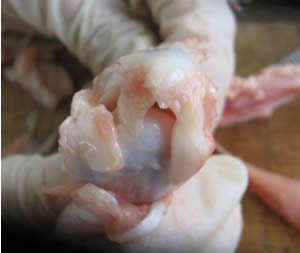
Look at a the bones of the human hand. Identify the humerus, ulna and radius. Compare the similar features between the chicken wing and the human hand.
Muscles move bones. Muscles and bones form levers. Three types of levers exist, first order, second order and third order levers. What is the difference between each type of lever?
What type of lever is most common in the chicken wing?
Why is this lever better than the other type of levers?
Look at the human arm. Identify one pair of flexor and extensor muscles.
Locate a tendon. Try to stretch
this tendon. Is it easy to stretch?
Why is the tendon made from tough collagen fibres and not from elastic
fibres?
The chicken wing and the human hand are very similar. It clearly shows evolutionary links. Match the chicken wing parts shown on the diagram below with the equivalent human part.
Part B
Part C
Part D
Part E
Part F
Part G
